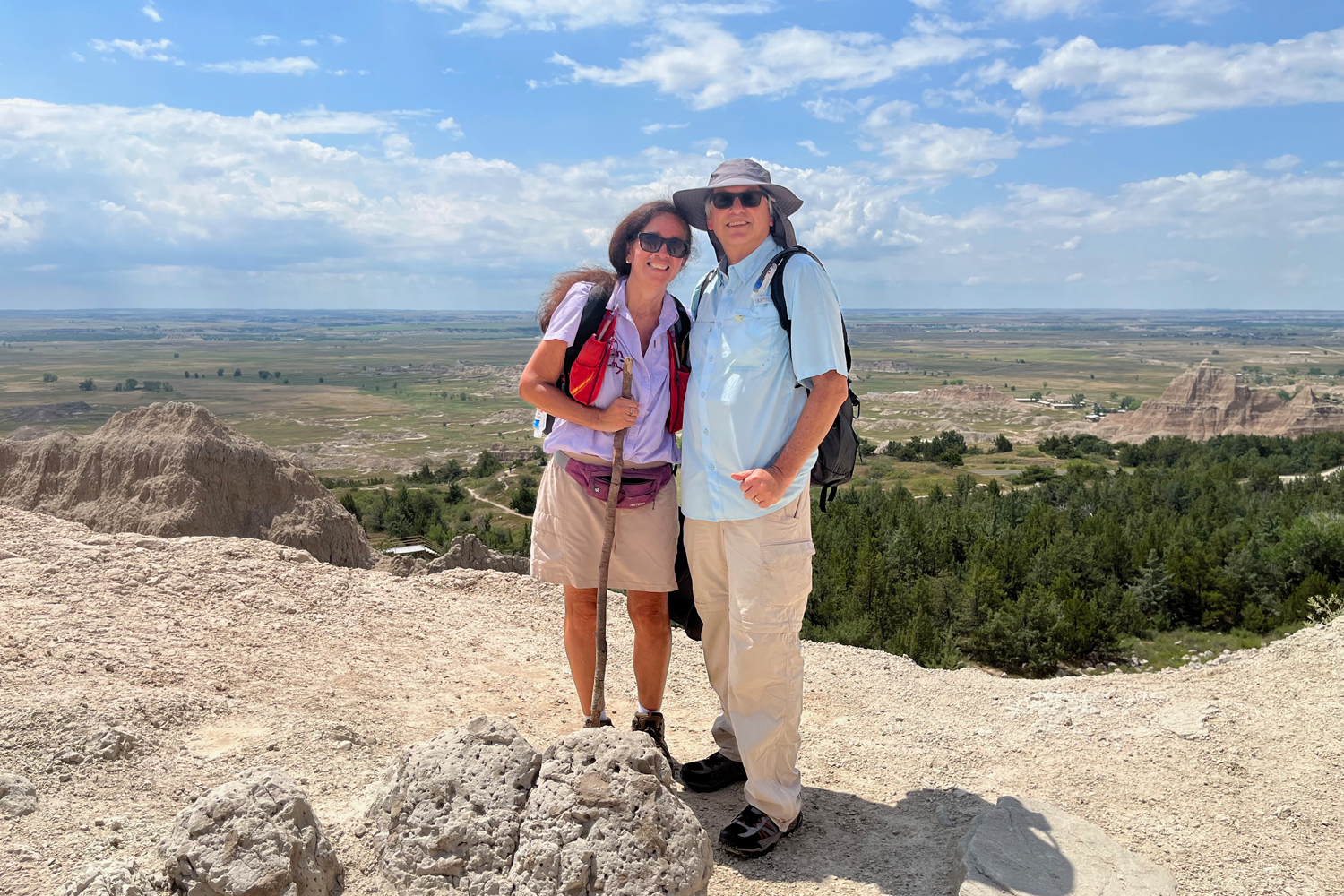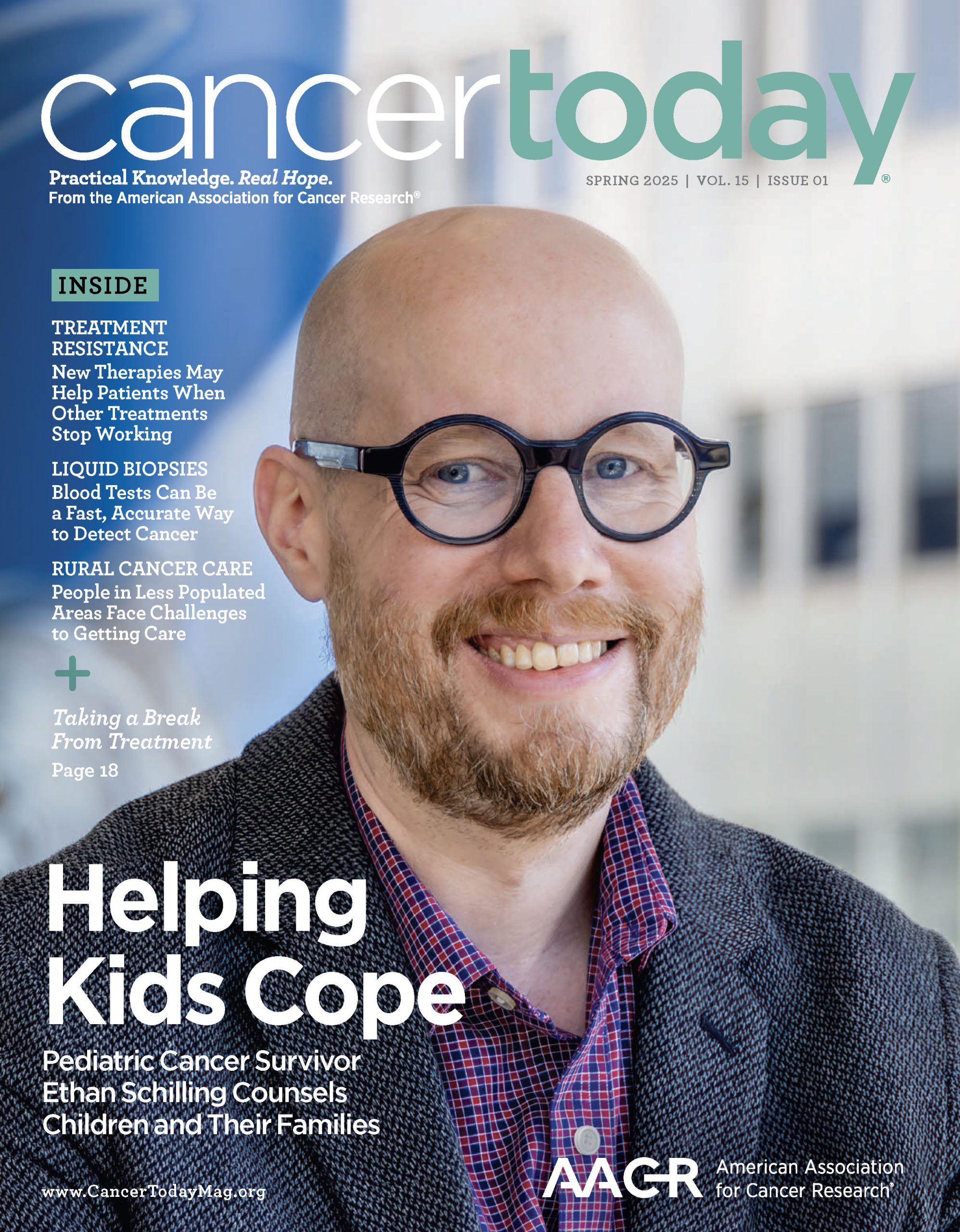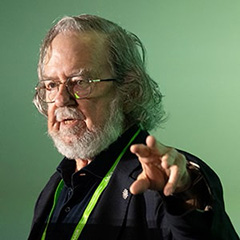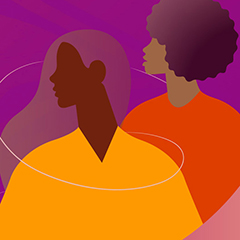Cancer Today is proud to help people share their stories and connect with readers who may learn from them. If you are interested in sharing your story, email us at personalstories@aacr.org.
MORE THAN 2 MILLION PEOPLE in the U.S. will be diagnosed with cancer in 2025, according to the American Cancer Society. A 2023 study suggests that about 6 million people in the U.S. are cancer caregivers. My husband Jon and I have worn both hats.
In March 2018, Jon was diagnosed with stage IV colorectal cancer that metastasized to both lungs. He finished chemotherapy in 2020 with no evidence of disease, but in 2022, the cancer returned. He endured more surgery, plus chemotherapy and grueling radiation for 33 days, with breaks only for weekends. Again, Jon was found to have no sign of cancer in December 2022. My experience as his caregiver was overwhelming the first time, but both Jon and I were better prepared the second time. We were pros.
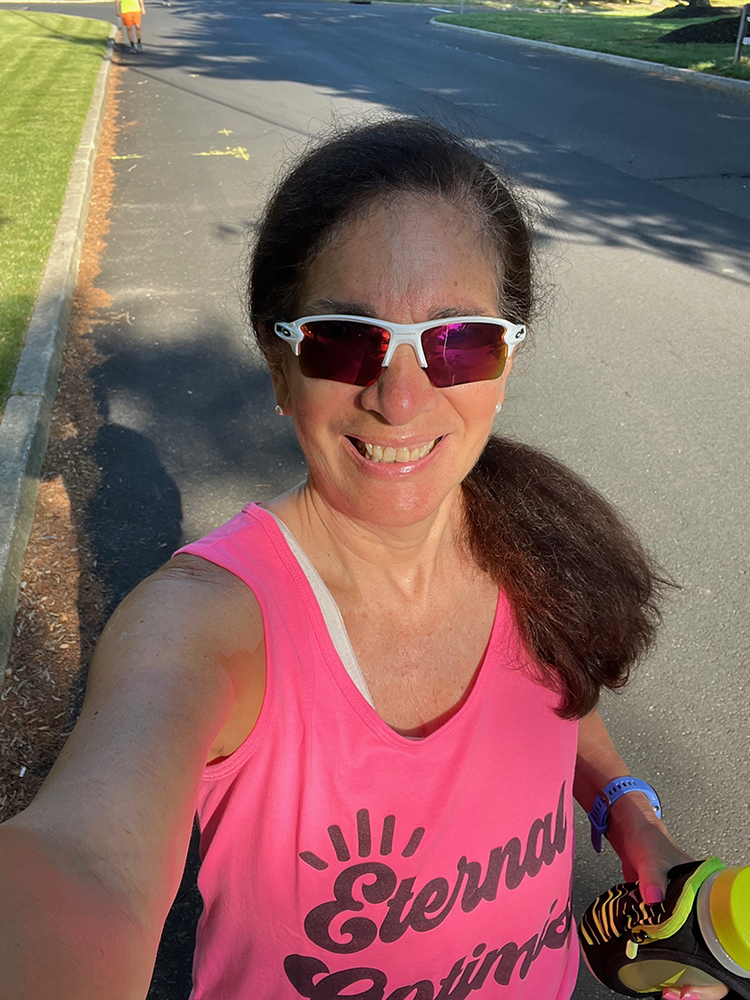
Miriam Díaz-Gilbert on a 2-mile walk she took the day after a partial mastectomy. Photo courtesy of Miriam Díaz-Gilbert
In 2021, I wrote an article for Cancer Today titled “Cancer Did Not Cancel Our Plans.” We lived up to that headline when news of Jon’s recurrence came just three days before we planned to embark on a 5,000-mile road trip to hike in three national parks. Despite the recurrence, Jon continued to crew me at my 50-mile, 60-hour, 48-hour and 24-hour ultramarathon events, providing me with food and hydration, draining my blisters, changing my socks and encouraging me in my sleep-deprived state. In return, I continued to be his caregiver.
Then the roles were reversed. In March 2024, while training, I took my eyes off the sidewalk as an approaching car drove too close to the curb. I tripped on the uneven sidewalk and fell hard on my right side. The fall left me with a pain in the right side of my chest. An X-ray of my right rib showed no injury, but a mammogram of my right breast a week later raised a red flag. Then came a more advanced mammogram, a biopsy and a diagnosis of ductal carcinoma in situ (DCIS), a condition in which cells lining the milk ducts become cancerous without spreading into surrounding breast tissue. While I was annoyed when I fell, had the accident not occurred, I would not have been diagnosed when I was. I had no doubt about it; the fall was divine intervention that propelled me to get the mammogram I had skipped five months earlier.
But I stayed active. A radioactive seed was implanted in my right breast the morning after I crossed the finish line of a 24-hour track ultramarathon. Three weeks later, I had an outpatient partial mastectomy, which removed all signs of cancer, then went on a 2-mile walk the next day. I continued training for two ultramarathons in October, this time to collect miles of gratitude for being free of cancer.
I don’t know how many cancer caregivers become cancer patients. I don’t know how many spouses are both diagnosed with cancer. I had lost friends and family to the disease, so the worst outcome was not new to me. Around the same time that I was found to have DCIS, my brother-in-law was diagnosed with liposarcoma, a rare cancer that starts in the fat cells. He died less than a year after being treated with surgery, chemotherapy and radiation. But I also know that some patients, like Jon, survive cancer, not once but twice.
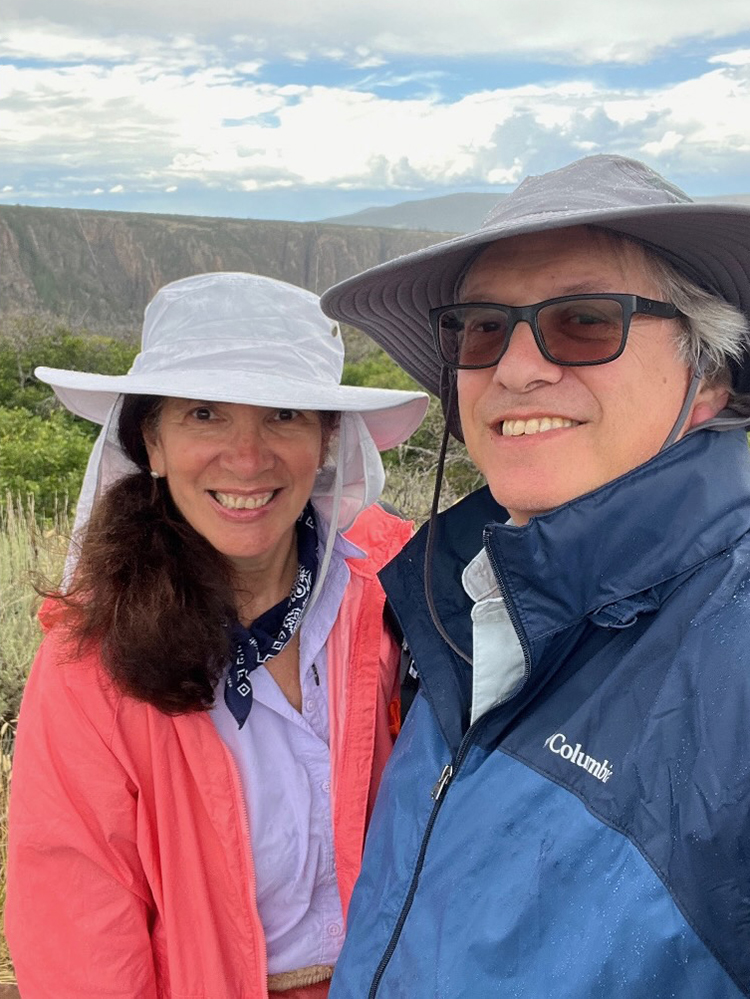
Miriam Díaz-Gilbert and Jon Gilbert hiking in Black Canyon of the Gunnison National Park in Colorado in August 2024. Photo courtesy of Miriam Díaz-Gilbert
Being a cancer caregiver is overwhelming, but the experience will prepare you should you ever become a cancer patient. Having worn both hats, I have witnessed much. I’ve seen Jon suffer through his treatments. I’ve celebrated with him when he went into remission twice. As a patient, I’ve experienced what I would call a “minor” cancer diagnosis because it was caught early, and I did not suffer. When Jon got diagnosed, I didn’t research colorectal cancer and treatments because I was overwhelmed. I was making his appointments, speaking to doctors, advocating for him, accompanying him to his treatments, paying the copay at the start of every appointment, paying the monthly health insurance premiums and hospital bills not covered by our insurance, keeping track of all our receipts, driving an hour home in the dark to shower and catch up on sleep, and maintaining a home.
When I was diagnosed, I wanted to learn more. I read about breast cancer, DCIS and partial mastectomy, also called lumpectomy, and I advocated for myself. My cancer diagnosis came with a necessary treatment: a partial mastectomy. The oncologists suggested I also undergo radiation and endocrine therapy to reduce the risk of recurrence, but I opted out because I believed the risk was low and there were no signs of cancer after my surgery.
Not all cancers require major surgery and grueling treatments. No doubt, witnessing Jon suffer so much pain from surgeries and radiation treatment, loss of the sense of taste and painful neuropathy from chemotherapy, and weight loss influenced my decision not to have additional treatment. Radiation did not prevent his cancer from recurring, but 33 days of chemotherapy, grueling radiation, and more pain the second time around did result in remission again.
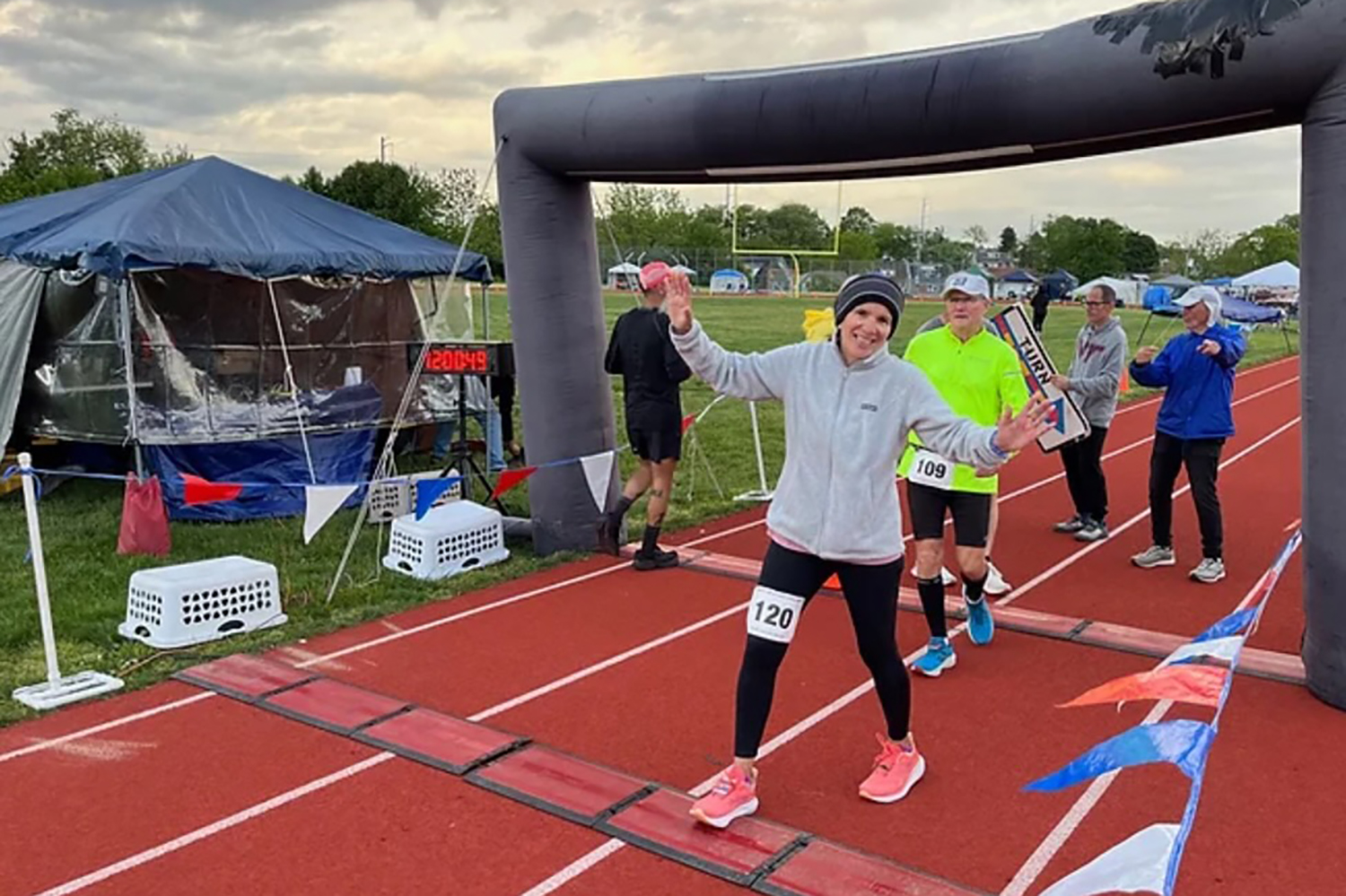
Miriam Díaz-Gilbert at the Dawn to Dusk to Dawn 24-hour ultramarathon in 2024. Photo courtesy of Miriam Díaz-Gilbert
In my role as a cancer caregiver for Jon, I learned how to navigate the health care system. As a patient, I had a wonderful nurse navigator who spoke with me for an hour on the telephone, explained the mammogram and biopsy results, and helped me schedule appointments with the surgeon, the genetic counselor and the oncologists.
I was lucky. Falling might have saved my life, but sometimes cancer rears its ugly head again after a remission. I know my breast cancer might recur or that I might be diagnosed with a new cancer elsewhere in my body. But in the midst of cancer diagnosis, treatment, remission, recurrence and caregiving, we need to live our lives. Remain as physically active as possible—walk, hike, bike and run. Movement is physically, spiritually, emotionally and mentally healing. March 2025 marked seven years since Jon was first diagnosed. During both of his cancer journeys, we kept moving and living through the pain. We hiked in 12 national parks. I kept running ultramarathons, and Jon kept crewing me. After my DCIS treatment in 2024, we hiked in three more national parks, and I finished two more ultramarathons. While a cancer diagnosis and treatment and cancer caregiving are medically, financially and physically draining, it’s important to stay positive, keep moving and enjoy the things we love.
Cancer Today magazine is free to cancer patients, survivors and caregivers who live in the U.S. Subscribe here to receive four issues per year.

